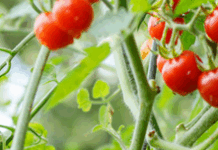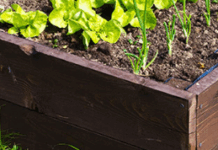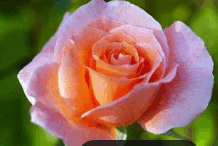https://hnr.k-state.edu/extension/info-center/newsletters/index.html
Blog Post: http://www.ksuhortnewsletter.org
Video of the Week: Will Fall Mums Last Through the Winter?
https://kansashealthyyards.org/all-videos/video/will-fall-mums-last-through-the-winter
UPCOMING EVENTS
Kansas Turf & Landscape Conference
The 72nd Annual Kansas Turf & Landscape Conference will be held on Wednesday, November 30 and Thursday, December 1 at the Hilton Garden Inn, Manhattan. The conference is an excellent way to learn about turf and landscape management, visit with old friends, network with new ones, and see all the latest products and supplies from local and national vendors.
The conference has been approved for commercial pesticide recertification hours:
1 Core hour
3A – 7 hours
3B – 7hours
GCSAA education points and International Society of Arboriculture CEUS will also be available by attending the conference.
For more information, go to https://www.kansasturfgrassfoundation.com/
REMINDERS
1. Dig cannas, glads, dahlias and other tender bulbs for winter storage.
2. Spray for winter annuals such as henbit and chickweed as well as dandelions in the lawn.
3. Till or turn the soil of the garden to add organic matter and eliminate overwintering sites for insects.
TURF
Apply Late-Season Nitrogen Application in November
November is the time to give Kentucky bluegrass and tall fescue lawns the last nitrogen application of the season. Why November? Because while top growth slows in response to cool temperatures, grass plants are still making food (carbohydrates) by photosynthesis. A November nitrogen application helps boost the photosynthesis rate. Carbohydrates that are not used in growth are stored in the crown and other storage tissues in the plant. These carbohydrate reserves help the turfgrass green up earlier in the spring and sustain growth into May without the need for early-spring (March or April) nitrogen. Those early-spring nitrogen applications are less desirable because they can lead to excessive shoot growth and reduced root growth. Other benefits of November-applied nitrogen for cool-season grasses include improved winter hardiness, root growth and shoot density.
How much should you apply? One to 1 to 1 ½ pounds actual nitrogen per 1,000 sq. ft. of lawn area is sufficient. The label rate for commercial lawn fertilizers should be within this range.
In order for this application to be effective the nitrogen must be readily available to the plant because the growing season is nearly over. Therefore, for a November application, use a soluble (quickly-available) nitrogen carrier such as urea or ammonium sulfate. Many turfgrass fertilizers sold in garden centers and other retail outlets also contain soluble nitrogen and would work well at this time of year. Avoid products that contain water-insoluble nitrogen (slow-release) for this application. As always, sweep up any fertilizer that gets on driveways, sidewalks, or streets and reapply it to the lawn. (Ward Upham)
FLOWERS
Garden Mums
As soon as garden chrysanthemums are done flowering, you may cut the plants back to 2 to 3 inches high. Some gardeners prefer to leave the top growth so that it provides some protection from fluctuating soil temperatures. If you choose to cut the tops off, apply a layer of mulch over the top of your mums after the ground has frozen or if the forecast calls for a sharp drop in temperature. Mums should not completely dry out during the winter. It may be necessary to water occasionally if sufficient rain or snow has not fallen. (Ward Upham)
MISCELLANEOUS
What to Do with Tree Leaves
It’s that time of year again. Leaves are rapidly falling from deciduous trees so it’s a good time to stop and think about options for handling the litter. Although a scattering of leaves won’t harm the lawn, excessive cover prevents sunlight from reaching turfgrass plants. Turf left in this state for an extended period will be unable to make the carbohydrates needed to carry it through the winter.
There are options for dealing with the fallen leaves other than bagging them up and putting them out for the trash collector. Composting is a great way to handle the refuse. Compost can then be used in the vegetable garden and flowerbeds.
An even easier method of making good use of the leaves is direct incorporation in either vegetable gardens or annual flower beds. Use a lawn mower with a bagging attachment to chop and collect the leaves. Transport them to the garden or bed and apply a 2 to 3 inch layer of leaves on the surface of the soil and then till them in. Repeat the process every couple of weeks until you run out of leaves or the weather becomes too cold or the soil becomes too wet. With luck, you should be able to make 3 to 4 applications this fall.
Another option is to mow the leaves with a mulching mower and let shredded leaves filter into the turf canopy. (A side-discharge mower also will work, but it won’t shred the leaves as thoroughly.) This method will be most effective if you do it often enough that leaf litter doesn’t become too thick. Mow while you can still see grass peeking through the leaves.
You may wonder whether this practice will be detrimental to the lawn in the long run. Research at Michigan State University in which they used a mulching mower to shred up to about one pound of leaves per square yard of lawn (one pound is equal to approximately 6 inches of leaves piled on the grass) for five consecutive years, found no long-term effects of the shredded leaves on turf quality, thatch thickness, organic content of the thatch, or soil test results (pH, nutrients, etc.). If you mow leaves and have a cool-season lawn, it makes sense to be on a fall nitrogen fertilization program and core-aerate in the fall (things you should be doing anyway). If you have a warm-season lawn, you can still use this technique but wait to fertilize and core-aerate until next late May or early June. (Ward Upham)
Roasting Pumpkin Seeds
Now that Halloween will soon be past, you may be wondering what to do with the pumpkins that were used to decorate for the holiday. Consider roasting the seeds before freezing temperatures destroys the pumpkin fruit. Cut open the pumpkin and remove the seeds and stringy material. Seeds should be washed and dried and the “strings” discarded. Toss the seeds with a little oil before roasting.
Flavor can be enhanced by adding a sprinkling of salt to the oiled seeds. Seeds can then be spread on a cookie sheet and roasted for about 25 minutes at 325 degrees F. Times may vary depending on the size and moisture content of the seed. Seeds are done when they turn a golden brown. If seeds are not eaten immediately, store in a zip closure bag in the refrigerator. (Ward Upham)
Contributors: Ward Upham, Extension Associate
Department of Horticulture and Natural Resources
1712 Claflin, 2021 Throckmorton
Manhattan, KS 66506
(785) 532-6173
For questions or further information, contact: wupham@ksu.edu OR cdipman@ksu.edu
This newsletter is also available on the World Wide Web at:
http://hnr.k-state.edu/extension/info-center/newsletters/index.html
The web version includes color images that illustrate subjects discussed. To subscribe to this newsletter electronically, send an e-mail message to cdipman@ksu.edu or wupham@ksu.edu listing your e-mail address in the message.
Brand names appearing in this newsletter are for product identification purposes only. No endorsement is intended, nor is criticism implied of similar products not mentioned.
K-State Research and Extension is committed to making its services, activities and programs accessible to all participants. If you have special requirements due to a physical, vision or hearing disability, or a dietary restriction please contact Extension Horticulture at (785) 532-6173.
Kansas State University Agricultural Experiment Station and Cooperative Extension Service K-State Research and Extension is an equal opportunity employer. Issued in furtherance of Cooperative Extension Work, Acts of May 8 and June 30, 1914, as amended. Kansas State University, County Extension Councils, and United States Department of Agriculture Cooperating, Ernie Minton, Dean.





